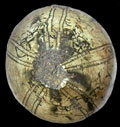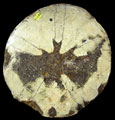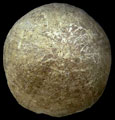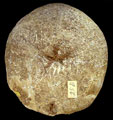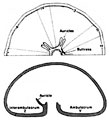The Echinoid Directory
Contributed by Jenna Sullivan, May 2007
Conoclypus L. Agassiz, 1839, p. 61
[= Oviclypeus Dames, 1878, p. 44 (subjective) ]
| Diagnostic Features |
|
|---|---|
| Distribution | Eocene of circum-mediterranean countries, India and Madagascar (?Brazil); Miocene of Italy. (Mortensen, 1948, p. 352) |
| Name gender | masculine |
| Type | Clypeus conoideus Leske, 1778, p. 159, by subsequent designation of Lambert & Thiery, 1914, p. 286. |
| Species Included |
Conoclypus pulvinatus Sowerb, 1840 = indeterminate. |
| Classification and/or Status | Irregularia; stem group Clypeasteroida; Conoclypidae. |
| Remarks | Differs from Heteroclypeus in that the periproct is elongate, in contradistinction to the transverse oval periproct of Heteroclypeus. (Mortensen, 1948, p. 352). Agassiz, L. 1839. Description des Échinodermes fossiles de la Suisse. Première partie, Spatangoides et Clypéasteroides. Mémoires de la Société helvétique des Sciences naturelles, 3, i-viii + 1-101, 14 pls. Mortensen, T.H. 1948. A Monograph of the Echinoidea. IV.1 Cassiduloida and Holectypoida. C.A. Reitzel, Copenhagen. 4(1):350 |
